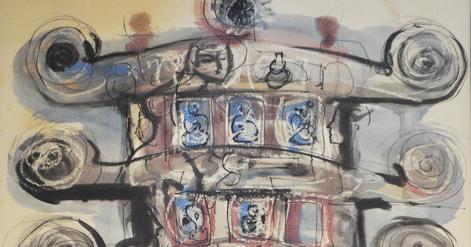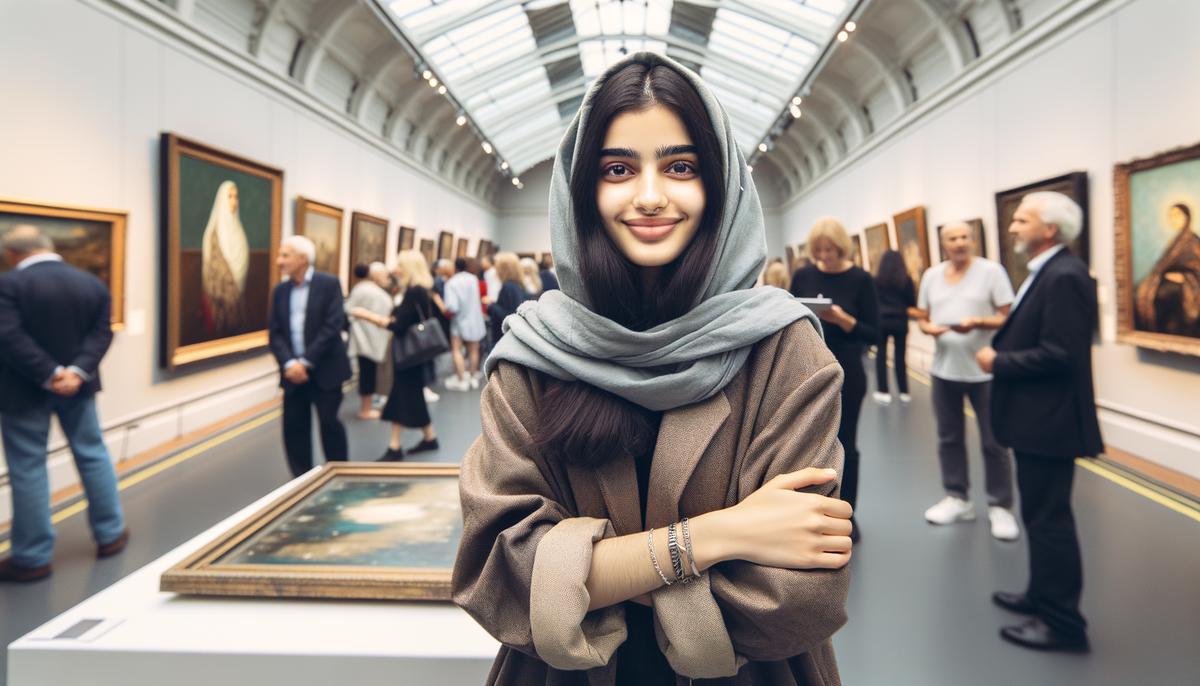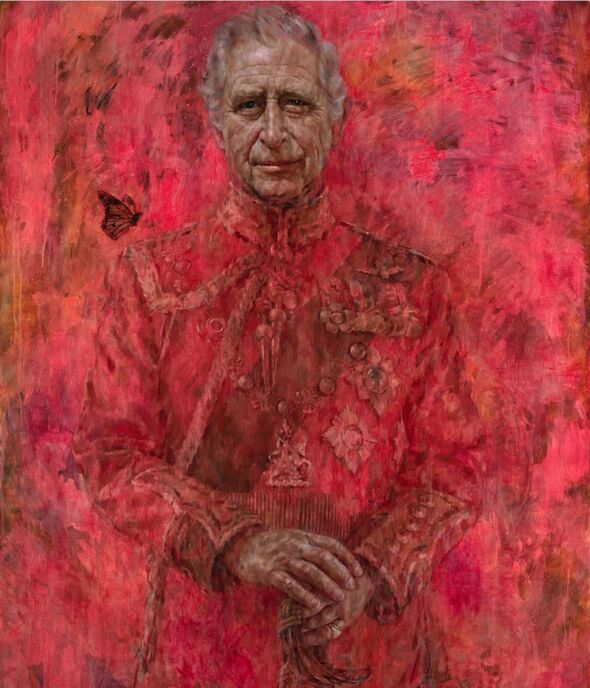Market Trends
Market Trends
Recent auction results in London illustrate the shifting dynamics within the art world. A notable trend is the fluctuating interest between contemporary and classic art, reflecting broader economic sentiments and collector behaviors. Contemporary pieces, especially those by emerging artists, experienced varied success, underscoring the selectiveness of today's buyers.
Price performance between contemporary and classic art reveals a nuanced narrative. Classic art pieces appeal for their historical and investment value, often achieving steady prices. Contemporary artworks exhibit more volatile results, with some pieces exceeding estimates while others fail to find buyers.
This volatility in contemporary art sales could stem from the influence of global economic factors. As investors seek opportunities based on shifting market dynamics and geopolitical uncertainties, art markets respond accordingly. Economic headwinds and optimism have left a mark on buying attitudes, driving demand for certain artists or movements while leaving others behind.
The rise of digital platforms has also shaped market trends. Online auction participation has expanded the global buyer base, introducing art markets to a wider, digitally savvy audience. This shift has accelerated competition and price discovery for sought-after pieces but also highlights the challenges of online engagement interrupting traditional sale room dynamics.
London art auctions have evidenced a changing geographical focus in buyer interest. Asian collectors, in particular, have demonstrated an increasing influence, driven by their growing financial clout and interest in diversifying into Western art. Works by Asian artists or those with cultural resonance garner strong interest, reflective of a broader embrace of global art narratives.
Thematic collections and provenances play a critical role in attracting interest. Collections with a compelling story or unique provenance often see competitive bidding, underscoring the importance of narrative in art buying. Collectors are not just buying a piece of art but are also investing in its history and story.
Sustainability and ethical considerations are emerging as influencers in collector decisions. There's a growing demand for assurances regarding the sourcing and authenticity of artworks, adding another layer to the complex considerations that govern auction success.
Recent London art auctions underscore a market influenced by traditional collector sensibilities, evolving digital landscapes, global economic forces, and changing ethical standards. As collectors navigate these waters, adaptability, research, and understanding of both art and its wider contextual influences remain key to success in this market space.

High-Profile Flops
High-Profile Flops
While the allure of snagging a masterpiece often drives fervent bidding wars, not every auction ends in success—a fact confirmed by some high-profile flops that serve as reminders of the art market's fickle nature. Despite boasting renowned creators, certain artworks have failed to find buyers, plunging from star lots to auction block bystanders. These instances raise questions about the intricate dance between estimation, market dynamics, and collectors' evolving tastes.
In one telling incident, a piece by a contemporary titan of the art world languished without a buyer. Despite the artist's international recognition and strong following, the artwork's ambitious pre-sale estimate didn't align with collectors' valuations on the day. This mismatch echoes a broader theme: estimating an artwork can be as much of an art as its creation, where wishful thinking sometimes collides with market realism.
Another scenario putting the spotlight on high-profile misfires revolves around market saturation. Even artists with undeniable talent can find themselves less sought-after if their works flood the market. Collectors, driven by investment considerations and passion, may balk at acquiring another piece if they sense an oversupply might undercut value retention. This cautious approach exemplifies how market saturation can cool interest in even the most lauded artists' works.
Changing tastes also play a pivotal role in determining auction success. What was en vogue a decade ago might now struggle to elicit interest in today's market. Contemporary tastes appear to be veering towards artworks that not only enchant visually but also resonate with current themes or adopt innovative mediums. As preferences evolve, pieces once celebrated for their audacity may find themselves on the auction block, looking for appreciation in a room of shifting tastes.
In analyzing these instances, it's evident that while an artist's reputation can drive interest, it does not guarantee success at auction. Factors like overestimation, market saturation, and evolving collector preferences frequently converge to write the unexpected chapters of art auction history. These tales of high-profile flops underline the unpredictable nature of art valuation and offer a counterpoint to the celebrated record-breaking sales, reminding us that value in the art world is as variable as taste.
Each unsold piece tells a story—a narrative intricately woven with economics, artistry, and human psychology that continues to intrigue collectors, sellers, and onlookers alike in the grand theater of art auctions.
Record-Breaking Sales
Record-Breaking Sales
Amidst the dance of light and shadow that characterizes the art world's finest offerings, the hammer has fallen in London, ushering in moments of triumph that resonate beyond the auction rooms. These are occasions where the alchemy of anticipation, rarity, and reputation transforms art into vessels carrying monumental worth, outstripping their presale estimates. Records have been shattered, narratives rewritten, and the power of human creativity celebrated within the whispers of record-breaking sales.
The spectacle of an artwork selling for sums significantly above its anticipated value is rare and breathtaking. The factors contributing to these financial successes are varied. At the heart of such phenomena is the allure of rarity. Artworks that stand as singular testaments to an artist's vision, or periods that encapsulate a movement's zenith, command premiums from collectors eager to own a piece of history.
Further amplifying the value of these artistic treasures is the stature of the creators themselves. Names that have transcended mere artistic contribution to become cultural icons wield exceptional influence over auction outcomes. The impact of a Picasso, Rothko, or Basquiat captivates, compelling bidding paddles to soar in a salute to brilliance. The reputation of these artists acts as a magnet, drawing connoisseurs, collectors, and investors seeking diversification in an asset class that carries both emotional and financial weight.
Auction houses, recognized for their ability to create markets as much as cater to them, play an indispensable role in these dramatic price escalations. Through crafted narratives, curated catalogs, and global marketing strategies, they frame each auction as an event – an opportunity to partake in a moment of art historical significance. The skilled curation and presentation of art pieces contribute to building fervent anticipation that often culminates in prices surpassing expectations.
Beyond calculated strategies and historical precedence lies an element of spectacle inherent to the auction process—a ceremonial facet where emotion and strategy collide in real-time bidding wars. It's theatre wherein anticipation thickens the air, fostering an environment where records are actively pursued.
This pursuit, underpinned by diverse motives ranging from personal passion to investment acumen, highlights the experience of rivalry fashioned by the live auction format. The thrill that courses through galleries as competing interests lock horns over a coveted piece escalates its perceived value, transforming numbers into vibrant testaments of desire.
Record-breaking sales in London's auction houses unravel a compelling narrative of human engagement with art—a tapestry rich with emotional investment, historical reverence, and the belief in the transformative power of art. In every gavel's drop that resounds above estimate, one can discern the collective pulse of a society that yearns for connection through the timeless language of creativity. These record-shattering moments offer a reflection of both contemporary culture and timeless human aspiration – rendering clear that art, in its connection and conflict with commerce, remains a mirror of humanity.
Digital Influence
The Rise of Online Platforms
In the tapestry of the art auction world, digital platforms have stitched new patterns into the fabric of buying and selling. This digital frontier has recalibrated the gavels, bringing the auctioneer's chant into the palm of your hand. The transition has been both seismic and subtle, ushering in an era where the swipe of a finger holds the same power as a paddle raised in the reverence of an auction room.
Auction houses, institutions that have long thrived on physical presence and the immediacy of live bids, are now embracing online platforms with ardor. This pivot has broadened the audience, welcoming those who might have never crossed the threshold of a prestigious auction house, and democratized access to bidding. Where once entering the exclusive club required a certain savoir-faire (and a robust bank account), virtual galleries and online catalogs now invite a global audience to participate from the comfort of their own homes.
This digital wave has brought a buzz to the auction scene. The shift towards online viewing rooms and virtual auctions has expanded reach, allowing auction houses to tap into burgeoning markets and engage with a generation more at home online. Millennials and Gen Z collectors, armed with smartphones and a savvy understanding of digital landscapes, are entering the fray, eager to stake a claim in the art world. Platforms like Instagram and WeChat become galleries without walls, places where art discovery is as easy as scrolling through a feed.
Yet, this tidal wave of digital access comes with its own set of challenges. As the boundaries between physical and virtual blur, auction houses are tasked with finding new ways to create the tension and theater that define live auctions. The sense of occasion, intrinsic to the auction experience, risks dilution when every day is sale day and every screen a saleroom. Moreover, the anonymity and distance of online bidding pose challenges to authenticity and provenance – critical pillars upon which the auction world rests.
Auction houses are navigating these waters with agility. Live streaming has reinvented the auction room for the digital age, combining the convenience of online access with the thrill of live bidding. These platforms provide a real-time link to the action, complete with the drama of last-second bids and the suspense of competing for a coveted piece. Similarly, augmented reality tools now offer a lifelike preview of artworks in situ, bridging the gap between physical inspection and online viewing.
The implications of this digital evolution are profound. Online platforms have widened the geographic and demographic reach and recalibrated expectations around accessibility and transparency. The erstwhile opaque curtain of the art market is being drawn back, revealing a landscape that is more inclusive, competitive, and complex.
The heart of the art auction world now beats both offline and on, fueling an ecosystem where tradition and innovation intertwine. As collectors old and new navigate this blended space, the essence of art collecting — the chase, the conquest, and the joy of acquisition — remains unchanged, even as the rules of engagement are rewritten. In this new era, one thing is clear: the virtual gavel is every bit as mighty as its wooden counterpart, heralding a future where art is more accessible, dynamic, and within closer reach.
Emerging Artists
Emerging Artists in the Spotlight
Amidst the drama and allure of the established art market, a new narrative is quietly unraveling in London's auction houses—the story of the emerging artist. As traditional barriers crumble under the march of digital innovation, these temples of commerce and culture are increasingly spotlighting the work of lesser-known talents, weaving them into the rich tapestry of sales that once featured only the most established names. This shift underscores an evolution in the role of auctions: they are not just platforms for exchanging extraordinary works of art but also stages for uncovering tomorrow's masters.
The strategies employed by auction houses in curating and presenting works by emerging artists are nuanced. Curatorial teams now scour graduate shows, online portfolios, and studio spaces in pursuit of the fresh and new. The goal is twofold: to offer something unique to their clientele and to position their institution as a forward-thinking player in the art world. Once selected, these emerging talents are marketed with zeal, employing social media campaigns, virtual galleries, and digital catalogs rich with artist interviews and immersive content designed to tell their stories and seduce the savvy collector.
For emerging artists, the allure of breaking into the auction market is palpable. The chance to be featured in a London auction offers potential monetary rewards and an unmatched level of exposure. Suddenly, their work is placed before a global audience of serious collectors, institutional buyers, and art lovers, many eager to discover the "next big thing." The validation and credibility conferred by such visibility can be transformative, potentially launching careers in ways that gallery shows and art fairs cannot always replicate.
Yet, this spotlight comes with its own set of challenges. The market can be unpredictable, and while successes are celebrated, not every artist manages to capture the collectors' imagination. For every record-setting sale, others may pass without a bid, a situation that can be disheartening for newcomers. The spotlight of an auction places pressure on the value of an artist's work, with the hammer price often perceived as a reflection of their worth. This can be a precarious position for those still honing their voice and craft.
The process of selection inherently carries a degree of subjectivity. The decision-making rests in the hands of auction house experts, whose choices can make or break an artist's hopes of success. For every emerging artist who finds their way into these curated sales, countless others remain on the sidelines. The criteria for selection—market trends, personal tastes of curators, or speculative potential—can be opaque and varied.
Despite these hurdles, the inclusion of emerging artists in auctions opens up possibilities for reinventing the art market narrative. It democratizes access to a platform once reserved for a select cadre of established names, echoing a broader societal shift towards valuing diversity and innovation. As collectors become more adventurous, eager for the thrill of discovery and the prospect of supporting emerging talent, auction houses in London are adapting, curating sales that are as much about unearthing new talent as they are about trading in traditional bastions of value.
This dynamism between establishment and emergence, between the old guard and the new blood, is painting a future for auctions. In presenting the works of emerging artists alongside those of venerable masters, London's auction houses are not just selling art; they're nurturing the ecosystem that will sustain the market for generations to come. The dance between buyer and seller, the old and the new, continues—each auction gavel heralding not just a sale, but the potential dawn of an exciting artistic journey.

- Noe R. The Art Market 2023. Art Basel and UBS. 2023.
- McAndrew C. The Art Market 2022. Art Basel and UBS. 2022.
- Adam G. Big






















